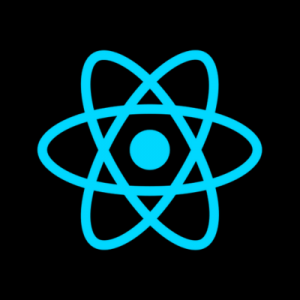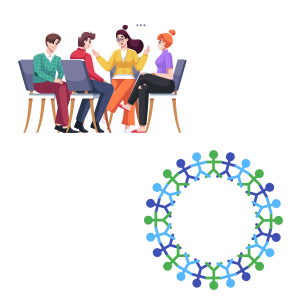With the proliferation of smartphones and the ever-increasing demand for intuitive mobile experiences, developers are constantly seeking tools that streamline the development process while ensuring optimal performance and user engagement. Mobile app development frameworks have emerged as indispensable assets, offering a unified approach to building applications across different platforms. These frameworks abstract away the complexities of platform-specific code, enabling developers to write code once and deploy it across multiple operating systems.
Flutter and React Native are two major contenders in this field. Both have gained widespread recognition for their ability to expedite the app development lifecycle and deliver high-quality applications. Flutter, developed by Google, and React Native, maintained by Meta platforms, have redefined the way developers create mobile apps. Flutter, introduced in 2017, has garnered attention for its robust performance and rich set of features. Built on the Dart programming language, Flutter boasts a reactive framework that facilitates the creation of visually stunning and fluid user interfaces. Its hot reload feature allows developers to make real-time changes to the codebase, significantly reducing iteration time and enhancing productivity.
React Native, on the other hand, made its debut in 2015 and quickly became a favorite among developers worldwide. Leveraging the power of JavaScript, React Native enables developers to build cross-platform applications with native-like performance. Its declarative programming model and extensive library of pre-built components make it an attractive option for teams looking to expedite development without compromising on quality.
In this blog, we embark on an in-depth exploration of Flutter and React Native, examining their features, performance, community support, and more. By the end of our journey, you’ll have a comprehensive understanding of these frameworks, empowering you to make informed decisions when choosing the right tool for your next mobile app project.
Flutter – An Overview
Description and Origin:
 Flutter, an open-source UI software development kit, was developed by Google in 2017. It is designed to enable developers to create high-quality native interfaces for both iOS and Android platforms from a single codebase. Flutter uses the Dart programming language, which was also developed by Google, to build fast, expressive, and flexible user interfaces. The genesis of Flutter stemmed from the need for a framework that could address the limitations of existing cross-platform solutions while delivering superior performance and native-like experiences. Drawing inspiration from web development frameworks like React and Angular, Flutter adopts a reactive programming model that simplifies the process of building complex UIs and handling user interactions.
Flutter, an open-source UI software development kit, was developed by Google in 2017. It is designed to enable developers to create high-quality native interfaces for both iOS and Android platforms from a single codebase. Flutter uses the Dart programming language, which was also developed by Google, to build fast, expressive, and flexible user interfaces. The genesis of Flutter stemmed from the need for a framework that could address the limitations of existing cross-platform solutions while delivering superior performance and native-like experiences. Drawing inspiration from web development frameworks like React and Angular, Flutter adopts a reactive programming model that simplifies the process of building complex UIs and handling user interactions.
Key Features and Benefits:
Flutter offers a plethora of features that make it a compelling choice for mobile app development:
- Hot Reload: One of Flutter’s standout features is its hot reload capability, which allows developers to instantly see the effects of code changes reflected in the app UI. This iterative development process accelerates experimentation and enables rapid iteration, thereby boosting productivity.
- Rich Set of Widgets: Flutter comes bundled with an extensive library of customizable widgets that facilitate the creation of visually stunning and responsive user interfaces. From basic elements like buttons and text fields to complex layouts and animations, Flutter provides developers with the building blocks needed to bring their app designs to life.
- High Performance: Flutter leverages the Skia graphics engine to render UI elements directly on the canvas, resulting in smooth animations and consistent performance across different devices. By eliminating the need for a bridge to communicate with native components, Flutter achieves near-native performance, ensuring a fluid user experience even on resource-constrained devices.
- Platform Agnostic: With Flutter, developers can write code once and deploy it across multiple platforms without sacrificing quality or performance. Whether targeting iOS, Android, or even the web, Flutter provides a unified development experience that streamlines the process of building cross-platform applications.
Supported Platforms and Use Cases:
Flutter is compatible with a variety of platforms, such as:
- iOS
- Android
- Web
- Desktop (experimental support)
This versatility makes Flutter suitable for a variety of use cases, ranging from mobile apps and web applications to embedded systems and beyond. Whether developing a consumer-facing app, an enterprise solution, or a multimedia experience, Flutter provides the flexibility and scalability needed to meet diverse project requirements.
Popular Apps Developed with Flutter:
Several high-profile apps have been built using Flutter, showcasing its capabilities and versatility:

- Google Ads: Google leveraged Flutter to rebuild its Google Ads app, enabling a seamless user experience across both iOS and Android platforms.
- Alibaba: The Alibaba Group, one of the world’s largest e-commerce companies, used Flutter to develop its Xianyu app, a platform for buying and selling second-hand goods.
- Reflectly: Reflectly, a popular journaling app, was built entirely with Flutter, demonstrating its suitability for creating intuitive and visually appealing user interfaces.
- Hamilton: The official app for the hit Broadway musical “Hamilton” was developed using Flutter, underscoring its ability to handle complex layouts and animations with ease.
React Native – An Overview
Description and Origin
 Born out of Meta’s need for a solution that would enable efficient cross-platform development without compromising on performance or user experience, React Native adopts a declarative programming model inspired by React, its web counterpart.
Born out of Meta’s need for a solution that would enable efficient cross-platform development without compromising on performance or user experience, React Native adopts a declarative programming model inspired by React, its web counterpart.
At its core, React Native leverages JavaScript to create native-like user interfaces, allowing developers to reuse code across different platforms while retaining the ability to access platform-specific APIs and features. By bridging the gap between web and mobile development paradigms, React Native has become a cornerstone of the modern app development landscape.
Key Features and Benefits
React Native offers a host of features that set it apart as a premier choice for mobile app development:
- Declarative UI: React Native’s declarative approach to UI development simplifies the process of building complex user interfaces by abstracting away low-level implementation details. Developers describe the desired UI state, and React Native handles the rest, automatically updating the UI to reflect changes in data.
- Cross-Platform Compatibility: With React Native, developers can write code once and deploy it across multiple platforms, including iOS, Android, and the web (via projects like React Native Web). This cross-platform compatibility streamlines the development process and ensures a consistent user experience across different devices and operating systems.
- Native Performance: Despite being built with JavaScript, React Native delivers native-like performance by leveraging platform-specific rendering APIs and components. By optimizing performance-critical operations and minimizing the overhead associated with cross-platform development, React Native ensures smooth animations, responsive UIs, and snappy user interactions.
- Hot Reloading: Similar to Flutter, React Native supports hot reloading, allowing developers to make changes to the codebase and see the results instantly reflected in the running application. This iterative development workflow accelerates the debugging and testing process, enabling rapid iteration and faster time-to-market.
Supported Platforms and Use Cases:
React Native supports a wide range of platforms, making it suitable for diverse use cases across various industries:
- iOS
- Android
- Web (via React Native Web)
- Windows (experimental support)
This broad platform support enables developers to target multiple devices and form factors with a single codebase, making React Native an ideal choice for building everything from consumer-facing mobile apps to enterprise solutions and beyond.
Flutter vs React Native: Comparative Analysis
Flutter's Rendering Engine and Performance:
Flutter’s performance is underpinned by its rendering engine, which utilizes the Skia graphics library to render UI components directly onto the canvas. This approach bypasses the need for a JavaScript bridge, resulting in faster rendering times and smoother animations compared to traditional cross-platform frameworks.
One of Flutter’s key performance advantages is its ability to achieve consistent frame rates and minimal latency across different devices and platforms. By compiling Dart code to native machine code ahead of time (AOT compilation), Flutter eliminates the runtime overhead associated with interpreting JavaScript code, resulting in snappy and responsive user interfaces.
Moreover, Flutter’s hot reload feature enables developers to make real-time changes to the codebase without sacrificing performance. This iterative development workflow accelerates the debugging and testing process, enabling developers to iterate rapidly and fine-tune the app’s performance characteristics.
React Native's JavaScript Bridge and Performance:
In contrast, React Native relies on a JavaScript bridge to communicate between the JavaScript runtime and the native platform APIs. While this architecture facilitates cross-platform development and enables access to native device features, it introduces an additional layer of abstraction that can impact performance, especially in scenarios involving complex UI interactions and animations.
The JavaScript bridge introduces overhead in terms of message serialization/deserialization and context switching between JavaScript and native code. As a result, React Native applications may experience occasional frame drops and increased latency, particularly on lower-end devices or in situations where the UI is highly dynamic.
However, React Native has made significant strides in optimizing performance, with initiatives such as Hermes (a JavaScript engine optimized for mobile apps) and TurboModules (a revamped architecture for native module communication) aimed at reducing overhead and improving runtime performance.
Development Experience
Language Choice: Dart (Flutter) vs. JavaScript (React Native)
 One of the key differences between Flutter and React Native lies in the choice of programming languages. Flutter utilizes Dart, a modern and expressive language developed by Google, while React Native relies on JavaScript, a ubiquitous language widely used in web development.
One of the key differences between Flutter and React Native lies in the choice of programming languages. Flutter utilizes Dart, a modern and expressive language developed by Google, while React Native relies on JavaScript, a ubiquitous language widely used in web development.
Dart offers several advantages for mobile app development, including a concise syntax, strong typing, and built-in support for features like asynchronous programming and null safety. While Dart may have a steeper learning curve for developers accustomed to JavaScript, its robust tooling and ecosystem make it a powerful choice for building complex applications with Flutter.
On the other hand, JavaScript’s familiarity and ubiquity make it an attractive option for developers transitioning from web development to mobile app development with React Native. JavaScript’s dynamic typing and flexible syntax can lead to faster prototyping and iteration, but it may also introduce challenges related to type safety and code maintainability in larger codebases.
Ultimately, the choice between Dart and JavaScript boils down to personal preference, team expertise, and project requirements. Both languages are well-suited for mobile app development and offer robust tooling and support within their respective ecosystems.
Hot Reload and Development Speed
Both Flutter and React Native offer hot reload functionality, allowing developers to make real-time changes to the codebase and see the effects reflected instantly in the running application. This iterative development workflow accelerates the debugging and testing process, enabling developers to iterate rapidly and fine-tune the app’s features and UI.
Flutter’s hot reload feature is particularly noteworthy for its speed and reliability. By compiling Dart code to native machine code ahead of time (AOT compilation), Flutter can update the UI in milliseconds without losing the app’s state or requiring a full restart. This near-instantaneous feedback loop enhances developer productivity and enables rapid iteration during the development process.
React Native’s hot reload functionality is powered by the Metro bundler, which rebuilds the JavaScript bundle and pushes updates to the running application. While React Native’s hot reload experience is generally smooth and efficient, it may occasionally encounter issues such as state inconsistency or component re-rendering, especially in larger projects with complex state management logic.
Overall, both Flutter and React Native provide robust hot reload capabilities that significantly improve development speed and productivity. Developers can leverage these features to experiment with different UI designs, test new features, and iterate quickly based on user feedback, ultimately delivering high-quality mobile apps in less time.
Flutter vs React Native - Documentation and Community Support
 Documentation and community support are critical factors that influence the development experience with Flutter and React Native. Both frameworks offer extensive documentation, tutorials, and sample projects to help developers get started and navigate the intricacies of mobile app development.
Documentation and community support are critical factors that influence the development experience with Flutter and React Native. Both frameworks offer extensive documentation, tutorials, and sample projects to help developers get started and navigate the intricacies of mobile app development.
Flutter’s documentation is comprehensive and well-organized, covering topics ranging from getting started guides to advanced topics like animation and performance optimization. Additionally, Flutter boasts a vibrant and active community of developers, with dedicated forums, Slack channels, and social media groups where developers can seek help, share insights, and collaborate on projects.
Similarly, React Native provides thorough documentation and resources for developers, including official guides, API references, and community-contributed libraries and tools. React Native’s community is also highly engaged, with a wealth of online forums, meetups, and conferences where developers can connect with peers, learn best practices, and stay up-to-date with the latest developments in the ecosystem.
In summary, both Flutter and React Native offer robust documentation and community support, empowering developers to overcome challenges, learn new skills, and build innovative mobile applications. Whether you’re a seasoned developer or a newcomer to mobile app development, you’ll find a wealth of resources and support within the Flutter and React Native communities to help you succeed.
Flutter vs React Native - User Interface and Design
Native-like UI in Flutter and Customizable Widgets
 Flutter prides itself on delivering native-like user interfaces (UIs) across multiple platforms. This is achieved through Flutter’s rich set of customizable widgets, which enable developers to create visually stunning and responsive UIs that adhere to platform-specific design guidelines. Whether it’s Material Design for Android or Cupertino for iOS, Flutter’s widgets seamlessly adapt to the native look and feel of each platform, ensuring a consistent and intuitive user experience.
Flutter prides itself on delivering native-like user interfaces (UIs) across multiple platforms. This is achieved through Flutter’s rich set of customizable widgets, which enable developers to create visually stunning and responsive UIs that adhere to platform-specific design guidelines. Whether it’s Material Design for Android or Cupertino for iOS, Flutter’s widgets seamlessly adapt to the native look and feel of each platform, ensuring a consistent and intuitive user experience.
Furthermore, Flutter’s flexible layout system and powerful animation support empower developers to create complex UIs with ease. From intricate transitions and gestures to custom animations and effects, Flutter provides the tools and capabilities needed to bring any design vision to life.
React Native's Use of Native Components and Flexibility
React Native takes a slightly different approach to UI development, leveraging native components to render UI elements on the screen. By bridging JavaScript code with native APIs, React Native ensures that UI elements behave and feel like their native counterparts, resulting in a familiar and intuitive user experience for end users.
In addition to native components, React Native offers a high degree of flexibility through its component-based architecture and support for third-party libraries. Developers can easily integrate existing native components or create custom components using JavaScript, enabling a dynamic and extensible UI development process.
In summary, both Flutter and React Native offer robust solutions for building engaging user interfaces, with Flutter excelling in its native-like UI capabilities and customizable widgets, while React Native provides flexibility and familiarity through its use of native components and JavaScript-based development approach.
Flutter vs React Native - Ecosystem and Libraries
Flutter's Growing Ecosystem and Packages
Flutter’s ecosystem has been rapidly expanding since its inception, with a growing number of packages and libraries available to developers. From UI frameworks and state management solutions to Firebase integrations and internationalization tools, Flutter’s ecosystem offers a wealth of resources to streamline the development process and enhance app functionality.
Flutter’s official package repository, Pub, provides access to thousands of packages maintained by the Flutter team and the community. Additionally, Flutter’s compatibility with Dart’s package manager, pub.dev, further enhances the discoverability and usability of third-party packages, making it easy for developers to find and integrate the tools they need for their projects.
React Native's Extensive Ecosystem and Third-party Libraries
React Native benefits from a mature and extensive ecosystem, with a vast array of third-party libraries and tools available to developers. From navigation frameworks and state management libraries to animation libraries and testing utilities, React Native’s ecosystem covers a wide range of use cases and development needs.
One of React Native’s strengths is its compatibility with the wider JavaScript ecosystem, including popular libraries and frameworks like Redux, Axios, and React Navigation. This interoperability enables developers to leverage existing JavaScript skills and libraries when building React Native applications, reducing the learning curve and accelerating development.
In summary, both Flutter and React Native offer rich ecosystems and extensive libraries to support developers in building high-quality mobile applications. Whether you’re looking for UI components, state management solutions, or integration with third-party services, both frameworks provide a wealth of resources to help you succeed.
Flutter vs React Native - Platform Integration
Ease of Integrating with Native Code in Flutter
Flutter provides seamless integration with native code through its platform channels mechanism. Developers can easily access platform-specific APIs and functionalities by defining method channels that enable communication between Dart code and native code written in Java, Kotlin, Swift, or Objective-C.
Flutter’s platform channels allow for bidirectional communication, enabling developers to pass data between Dart and native code and invoke platform-specific methods from within the Flutter application. This capability ensures that developers can leverage native functionality when needed, without sacrificing the benefits of cross-platform development.
React Native's Ability to Bridge with Native Modules
React Native’s bridge architecture facilitates integration with native modules, enabling developers to incorporate platform-specific functionality into their applications. By exposing native modules as JavaScript modules, React Native allows developers to access native APIs and features directly from their JavaScript code.
React Native’s bridge mechanism enables seamless interoperability between JavaScript and native code, empowering developers to leverage platform-specific capabilities without leaving the React Native environment. This flexibility makes React Native an ideal choice for projects that require deep integration with native functionality or access to device-specific features.
In summary, both Flutter and React Native offer robust solutions for integrating with native code and accessing platform-specific functionality. Whether you’re building a cross-platform application that requires seamless integration with native APIs or incorporating advanced platform features into your app, both frameworks provide the tools and capabilities needed to achieve your goals.
Flutter vs React Native - Learning Curve
Flutter's Learning Curve for Developers New to Dart
 For developers new to Dart, Flutter may initially present a learning curve as they familiarize themselves with the language and its syntax. However, Dart’s concise and expressive syntax, combined with Flutter’s comprehensive documentation and learning resources, can help accelerate the learning process and enable developers to become proficient in a relatively short amount of time.
For developers new to Dart, Flutter may initially present a learning curve as they familiarize themselves with the language and its syntax. However, Dart’s concise and expressive syntax, combined with Flutter’s comprehensive documentation and learning resources, can help accelerate the learning process and enable developers to become proficient in a relatively short amount of time.
Additionally, Flutter’s hot reload feature and reactive programming model facilitate rapid experimentation and iteration, allowing developers to learn by doing and see the immediate impact of their code changes on the application’s UI.
React Native's Familiarity for JavaScript Developers
React Native’s use of JavaScript makes it a natural choice for developers with experience in web development. JavaScript’s ubiquity and familiarity enable developers to leverage existing skills and knowledge when building React Native applications, reducing the learning curve and enabling a smooth transition to mobile app development.
Furthermore, React Native’s component-based architecture, inspired by React, allows developers to apply familiar patterns and practices from web development to mobile app development. This familiarity with React’s programming model and ecosystem can further accelerate the learning process and empower developers to build high-quality applications with confidence.
In summary, while both Flutter and React Native offer distinct programming languages and development paradigms, developers can quickly become proficient in either framework with the help of comprehensive documentation, learning resources, and hands-on experience. Whether you’re new to Dart or JavaScript, both frameworks provide the tools and support needed to succeed in mobile app development.
Flutter vs React Native - Community and Future Outlook
The community and future outlook of a framework play a crucial role in its long-term viability and adoption. Both Flutter and React Native benefit from vibrant and active communities of developers, contributors, and enthusiasts who contribute to the growth and evolution of the frameworks.
Flutter’s community has seen rapid growth since its launch, with a diverse and engaged community of developers worldwide. Flutter’s open-source nature and strong backing from Google have fostered a collaborative ecosystem where developers can share knowledge, contribute to open-source projects, and participate in community events and initiatives.
Similarly, React Native boasts a large and dedicated community of developers, backed by Facebook’s ongoing investment in the framework. React Native’s active community fosters innovation, drives adoption, and provides valuable support and resources to developers at all skill levels.
Looking ahead, both Flutter and React Native are poised for continued growth and success in the mobile app development space. With ongoing investments in performance, tooling, and ecosystem support, both frameworks are well-positioned to meet the evolving needs of developers and businesses and shape the future of cross-platform development.
Conclusion
The choice between Flutter and React Native depends on various factors, including project requirements, developer expertise, and ecosystem preferences. Both frameworks offer compelling solutions for building high-quality mobile applications, with unique strengths and trade-offs that cater to different use cases and development scenarios.
Flutter excels in its native-like UI capabilities, customizable widgets, and robust performance, making it an ideal choice for projects that prioritize visual fidelity, performance, and platform consistency. React Native, on the other hand, offers flexibility, familiarity, and deep integration with native code, making it well-suited for projects that require seamless access to platform-specific functionality and a smooth transition from web to mobile development.
Ultimately, the decision between Flutter and React Native should be based on a careful evaluation of your project’s requirements, development team’s skill set, and long-term strategic goals. By considering the factors discussed in this comparison, you can make an informed decision that aligns with your objectives and sets your project up for success in the competitive world of mobile app development.

